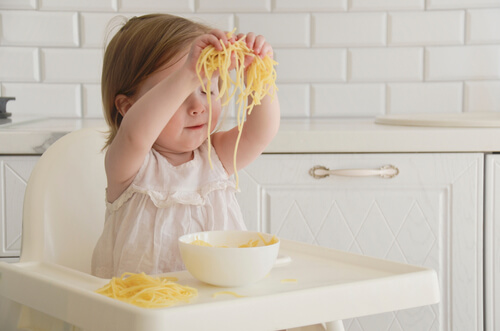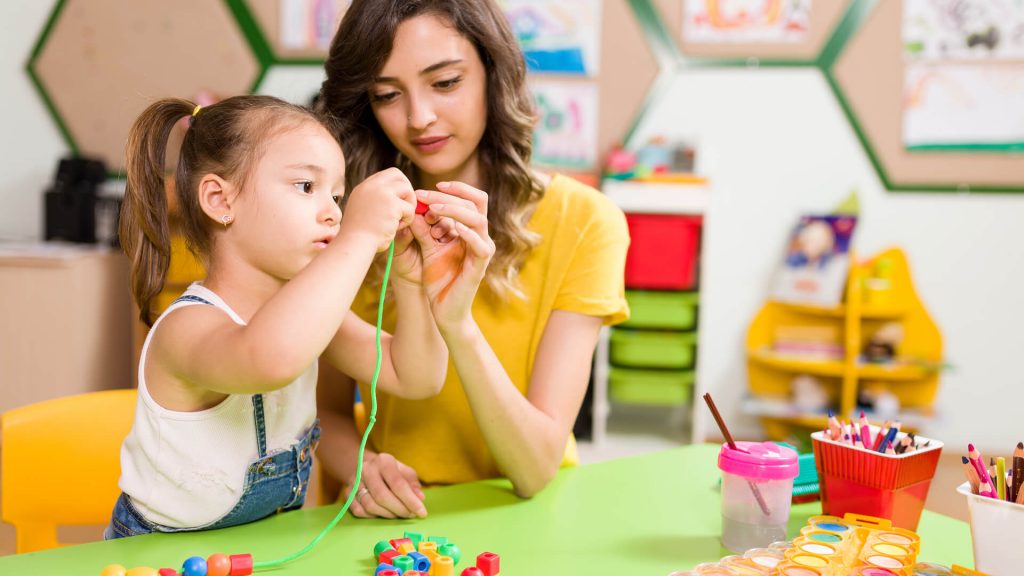8 Fine Motor Skills Activities for Young Children
Feb 9, 2022 Fine motor skills begin to develop as early as three-months-of-age. The first tangible sign is when your baby can close and open his or her fist. From there, fine motor skills improve naturally over time. You can help this process with these fun activities that show how to develop fine motor skills in children.
In This Article
How to Build Fine Motor Skills in Young Children
Tiny Bits
Babies typically start finger foods between 6 to 9 months old. Once your baby can sit independently in a high chair you can start small bits of soft food. Most babies will begin picking up finger foods with a raking motion using their whole hand. But over time, babies will start using a pincer grip with their index and thumb finger.
The ‘tiny bits’ fine motor activity is simple! In a high chair, have your baby feed him or herself tiny bits of food to develop fine motor skills. Here are some great finger food options to try for this activity:

- Toast
- Avocado
- Scrambled eggs
- Cooked pasta
- Peaches
- Bananas
- Puffs/Cheerios
- Cooked carrots
- Sweet potatoes
String Beads
For this fine motor activity, you can use a variety of items to string. Using pipe cleaners, thick string, or shoelace have your child string on large plastic or wooden beads, Fruit Loops/Cheerios, dry pasta, or any other circular object. This will help develop the pincer grip and eventual pencil grasp for necessary skills in preschool.
Stickers
Have your child take stickers off a sticker sheet and place them on a piece of paper. To do this, your child needs lots of concentration, patience, and fine motor muscles in the hand and wrist. While most kids love stickers, turn this into an educational activity by organizing the stickers by color.
Boost Your Child’s Speech Development!
Improve language & communication skills with fun learning!

Button Sorting
Similar to sorting colored stickers, buttons can be used as a fine motor activity by picking up buttons with plastic tweezers or by hand to sort by color or shape. Shapes buttons work great for this fine motor activity because they come in different shapes (diamond, square, stars, etc.) and colors.
To increase the difficulty for fine motor skills have your child sort the buttons and push them through a slot of a piggy bank. You can create a make-shift piggy bank by cutting a small rectangle slot on the top of an old small plastic Tupperware container. Better yet, you can use plastic Playdough jars!
Card Lacing
Card lacing is an activity for preschool-aged children that’s similar to sewing. You can choose to buy lacing cards with different shapes and animals or make your own. To create lacing cards simply use a hole punch to trace an outline of a design. Then have your child use his or her pincer grip to weave a shoelace thread in and out of the holes for the design.

Animal Rescue
This is a fun fine motor activity requiring critical thinking skills. Wrap thin rubber bands around small plastic animals like Little People and have your child ‘rescue’ them. Don’t be afraid to make it difficult with multiple rubber bands wrapped around each animal! If you don’t want to use rubber bands, you can always use painter’s tape to tape animals to a table and have your child ‘rescue’ them.
Clothespins and Tweezers
Have your child develop hand and grip strength by opening and closing clothespins. This is an extremely hard task and does require great hand strength so you may need to help your child with a hand-over-hand technique.
Plastic tweezers work well for sensory bins to pick up and organize such things as dry cereal, beans, pasta, and pom-poms. While your child may be frustrated at first, he or she will quickly develop increased hand strength with tweezers and clothespins.

Q-Tip Painting
Instead of using fingers or paint brushes, have your child create dots and strokes with Q-Tips. Q-Tips are very thin and require your child to form a pencil grip of thumb, index, and middle finger. This fine motor activity will only help prepare your child for preschool!
Eyedropper Painting
While Q-Tip Painting is great for improving coordinated fine motor skills, using an eyedropper for painting will also help improve upon fine motor control and coordination. Using an eyedropper for painting is best done with watercolors and watercolor paper for better absorption. All your child needs to do is squeeze and release the bulb of the eyedropper for completing a color drop painting!
Fine motor skills do develop naturally with time. But it never hurts to help advance your child’s fine motor activities above! These same activities can even be used for children who are behind with fine motor skills and will help prepare kids for fine motor skills activities in preschool.
